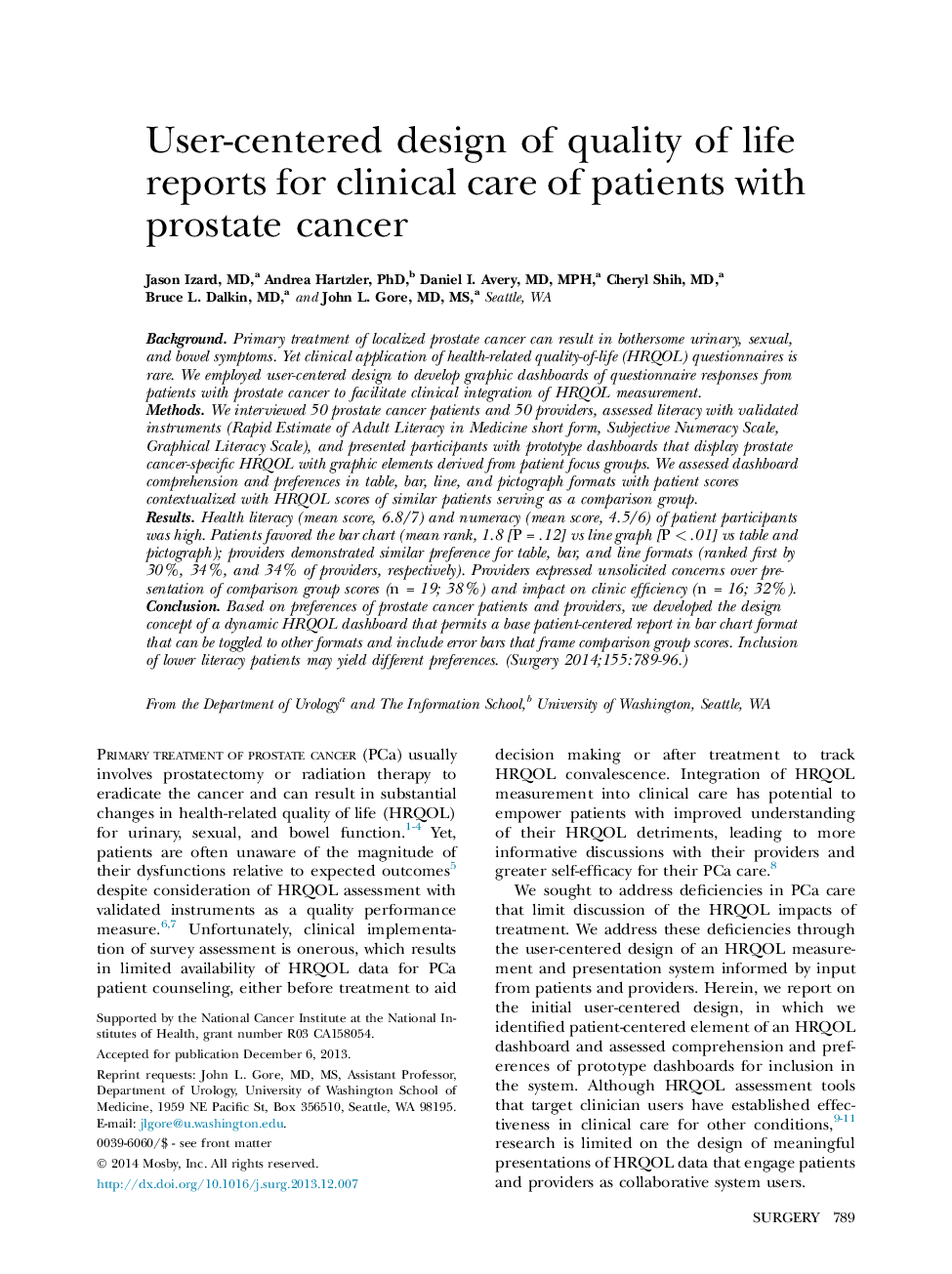| Article ID | Journal | Published Year | Pages | File Type |
|---|---|---|---|---|
| 4306531 | Surgery | 2014 | 8 Pages |
BackgroundPrimary treatment of localized prostate cancer can result in bothersome urinary, sexual, and bowel symptoms. Yet clinical application of health-related quality-of-life (HRQOL) questionnaires is rare. We employed user-centered design to develop graphic dashboards of questionnaire responses from patients with prostate cancer to facilitate clinical integration of HRQOL measurement.MethodsWe interviewed 50 prostate cancer patients and 50 providers, assessed literacy with validated instruments (Rapid Estimate of Adult Literacy in Medicine short form, Subjective Numeracy Scale, Graphical Literacy Scale), and presented participants with prototype dashboards that display prostate cancer-specific HRQOL with graphic elements derived from patient focus groups. We assessed dashboard comprehension and preferences in table, bar, line, and pictograph formats with patient scores contextualized with HRQOL scores of similar patients serving as a comparison group.ResultsHealth literacy (mean score, 6.8/7) and numeracy (mean score, 4.5/6) of patient participants was high. Patients favored the bar chart (mean rank, 1.8 [P = .12] vs line graph [P < .01] vs table and pictograph); providers demonstrated similar preference for table, bar, and line formats (ranked first by 30%, 34%, and 34% of providers, respectively). Providers expressed unsolicited concerns over presentation of comparison group scores (n = 19; 38%) and impact on clinic efficiency (n = 16; 32%).ConclusionBased on preferences of prostate cancer patients and providers, we developed the design concept of a dynamic HRQOL dashboard that permits a base patient-centered report in bar chart format that can be toggled to other formats and include error bars that frame comparison group scores. Inclusion of lower literacy patients may yield different preferences.
